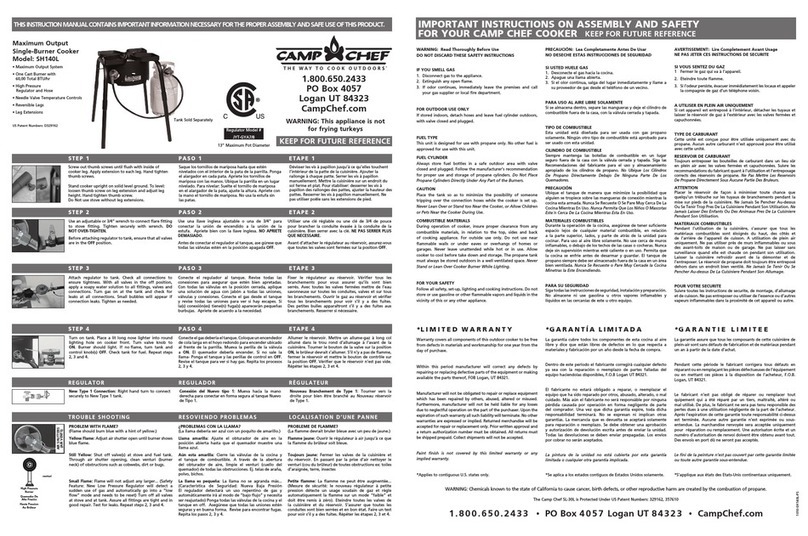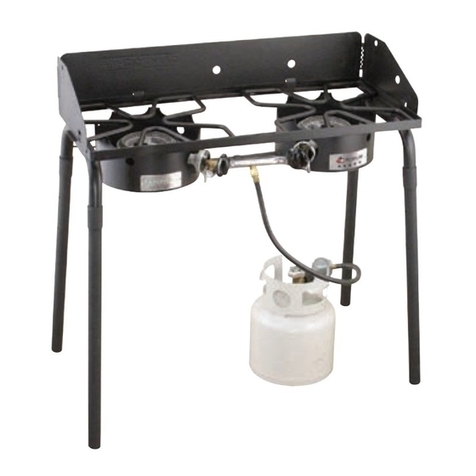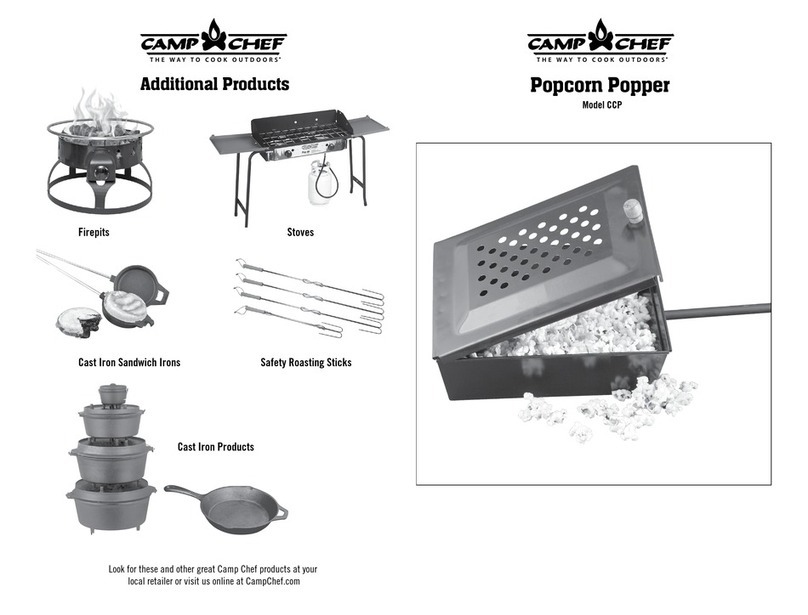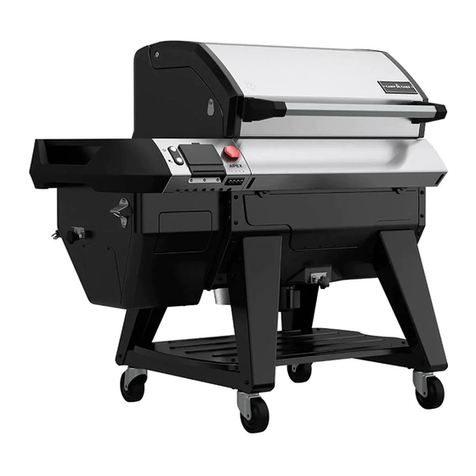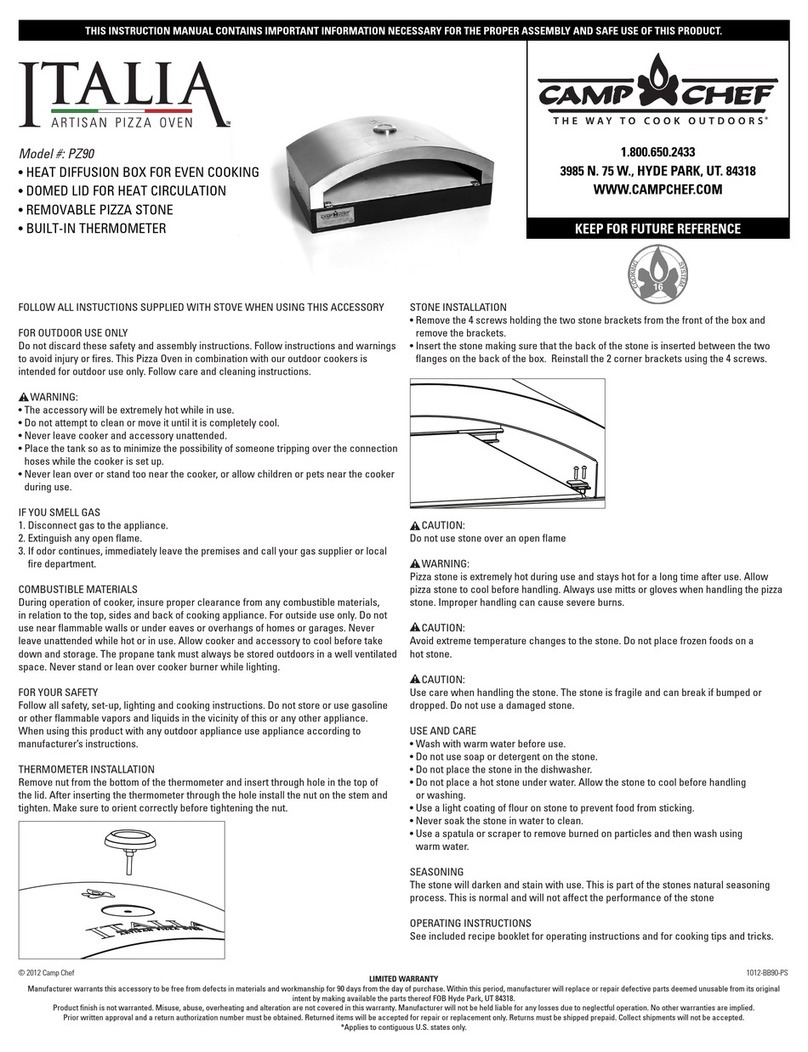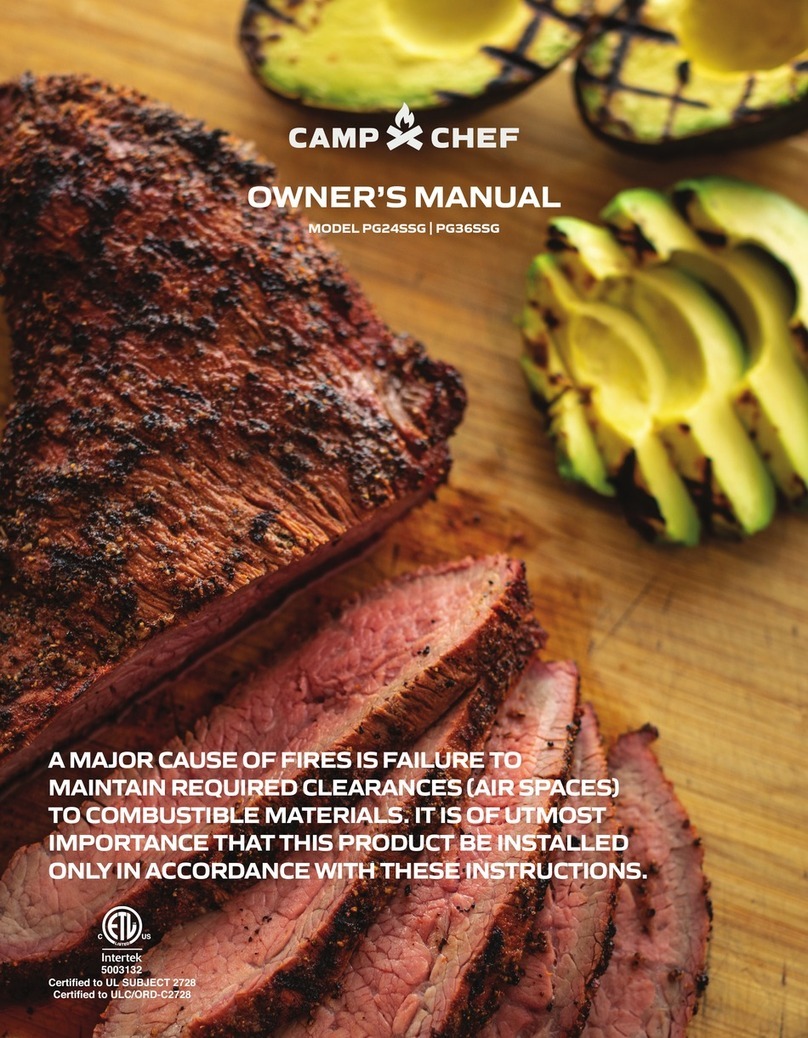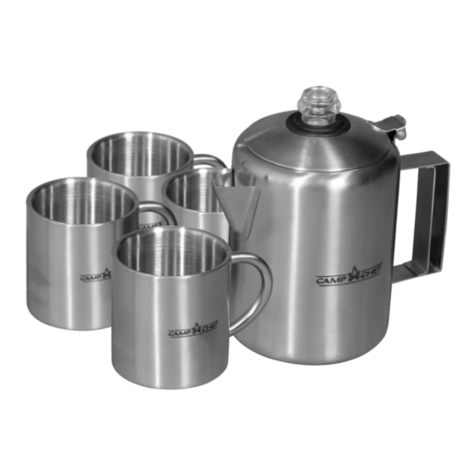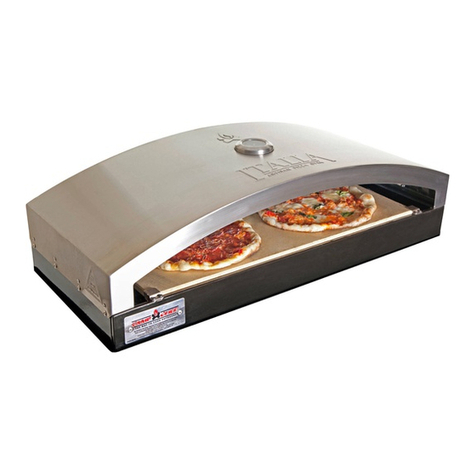
5
there is a leak. Replace the faulty parts.
9. Extinguish all open flames before
connecting the gas supply to the appliance
and before checking for leaks.
10. When cooking with oil or grease, a
thermometer MUST be used.
11. NEVER allow oil or grease temperature
to get hotter than 400ºF (200ºC). If the
temperature exceeds 400ºF (200ºC) or
if oil begins to smoke, IMMEDIATELY turn
burner off.
12. When cooking with oil or grease, fire
extinguishing materials shall be readily
accessible. In the event of an oil or grease
fire do NOT attempt to extinguish with
water. Use a Type BC dry chemical fire
extinguisher or smother fire with dirt,
sand or baking soda.
13. NEVER overfill a cooking pot with oil,
grease or water. Follow instructions in this
manual for establishing proper oil, grease
or water levels.
14. When frying with oil or grease, all food
products MUST be completely thawed
and towel dried to remove excess water.
Failure to completely thaw and dry food
may cause oil or grease to overflow.
Follow instructions in this manual for
frying foods.
15. When frying, slowly submerse food
products into the oil or grease. Do NOT
drop.
16. DO NOT place an empty cooking vessel
on the appliance while in operation.
Use caution when placing anything in
the cooking vessel while burner is in
operation.
17. In the event of rain, hail, sleet or other
forms of precipitation, while cooking
with oil or grease, IMMEDIATELY turn
off burner(s) and gas supply, then cover
cooking vessel. Do NOT attempt to move
the appliance or the cooking vessel.
18. Avoid bumping or impact with the
appliance to prevent spillage or splashing
of hot cooking liquid.
19. Do NOT move the appliance when in use.
Allow unit to cool to 115°F (45°C) before
moving or storing.
20. This appliance will be hot during and after
use. Use insulated oven mitts or gloves for
protection from hot surfaces or splatter
from cooking liquids.
21. In case there is a fire, call the local fire
department or dial 911. Stay clear from
flames. Do not attempt to extinguish an
oil or grease fire with water.
22. Use only accessories, such as
cooking vessels recommended by the
manufacturer, to allow safe and proper
performance of the product. Never use
a cooking vessel larger than the capacity
and diameter recommended by the
manufacturer. Maximum cooking vessel
size is 14" diameter and 12" height.
23. This product is not intended for
commercial use.
24. Always allow the appliance to cool before
covering the patio cover.
25. Always cover the appliance, with patio
cover (if supplied), when not in use.
26. In the event the appliance has been
exposed to water, tilt the appliance
forward and allow water to drain from the
burners before attempting to ignite.
• Use appliance only with LP (propane) gas
and the regulator/valve assembly supplied
with the appliance.
• Installation must conform with local codes,
or in their absence with National Fuel Gas
Code, NFPA 54/ANSI Z223.1. Handling and
storage of LP cylinders must conform to LP
Gas Code NFPA/ANSI 58. Appliance is not
for use in or on recreational vehicle and/or
boats.
• Do not modify this appliance. Modifications
will result in a safety hazard.
• Apartment
Dwellers: Check with
management to learn
the requirements and
fire codes for using an
LP Gas appliance at an
apartment. If allowed,
use outside on the
ground floor with a 10 ft/3 m clearance from
walls or rails. Do NOT use appliance on or
under any apartment, condominium balcony
or deck.
• Before opening LP tank valve, check the
Safety Cap
